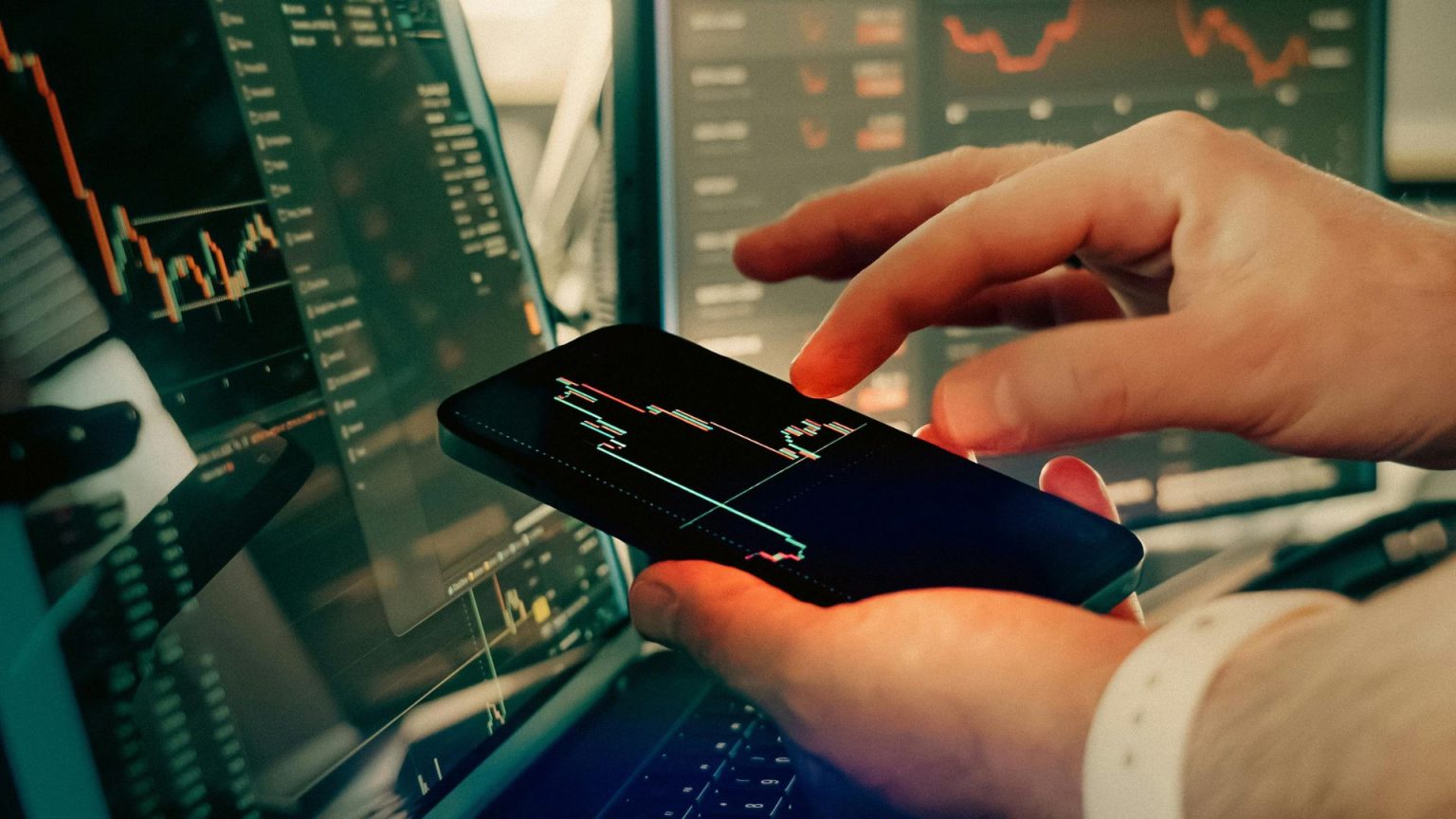Crypto leverage is one of the most powerful tools in trading — but also one of the most dangerous.
Used correctly, it helps you amplify winning setups, hedge your portfolio, and trade with precision.
Used incorrectly, it turns into gambling, emotional decisions, and rapid liquidation.
And right now, as the market becomes more volatile, liquidations are hitting all-time highs because most traders don’t understand how leverage truly works. They overexpose, they chase, they trade without a plan — and then they blame the exchange when they blow up their accounts.
But the truth is simple:
Leverage isn’t the problem. Your structure is.
If you want to trade leverage the right way — with consistency instead of chaos — here’s the full framework used by top traders worldwide.
What Is Leverage (Really)? Most Traders Don’t Understand This
Leverage allows you to control a larger position with a smaller amount of capital.
But that’s the surface-level explanation.
The deeper truth — the one nobody talks about — is this:
Leverage magnifies your discipline more than your dollar size.
If you’re disciplined with entries, stops, and logical targets, leverage becomes a weapon.
If you are emotional, impulsive, and chasing volatility, leverage becomes a trap.
Most traders blow up because they treat leverage like a lottery ticket instead of a tool.
They use 25x–100x leverage on low-quality setups and then wonder why they get wicked out on tiny price movements.
To trade leverage profitably, you need process, not pressure.
Tip #1: Use Leverage to Reduce Risk — Not Increase It
Here’s the biggest misconception about leverage:
❌ “Leverage means taking bigger positions.”
✔️ “Leverage allows you to keep positions smaller while keeping your exposure controlled.”
Professional traders use leverage to:
- Limit capital locked in trades
- Reduce overall account exposure
- Maintain liquidity
- Execute tight, precise entries
- Trade setups without overcommitting funds
They aren’t using leverage to “go bigger.”
They’re using it to “go smarter.”
If your goal with leverage is to “win big,” you have the wrong mindset.
Your goal should be to control risk tightly and take clean, structured trades.
Tip #2: Only Trade High-Probability Setups (No FOMO Trading)
Leverage magnifies everything — including bad decisions.
That’s why you should never use leverage on:
❌ Choppy ranges
❌ Low-liquidity pumps
❌ Emotional FOMO candles
❌ Random altcoin breakouts
❌ Unconfirmed trend reversals
You should use leverage only on:
✔️ Strong trend continuation setups
✔️ Pullback entries at key levels
✔️ High-volume breakouts
✔️ Clean retests with structure
✔️ Clear confluence (support, EMAs, volume, market context)
If you can’t explain the trade without emotion, you shouldn’t take it with leverage.
Tip #3: Stop Using Tight Stop-Losses With High Leverage
Most traders get liquidated because they stack mistakes:
- High leverage
- Small stop-loss
- Poor entry
- No confluence
- Emotional timing
This is why liquidation hits so quickly.
If you’re using leverage correctly:
✔️ Your stop-loss is based on structure, not your emotions.
✔️ Your position size is small enough that your stop is logical.
✔️ Your entry is precise, not forced.
✔️ Your liquidation price should be far away — never within natural volatility ranges.
Your stop-loss should protect you, not choke the trade.
Tip #4: Use Isolated Margin, Not Cross (Especially as a Beginner)
If you’re not a consistently profitable trader yet, cross margin is extremely dangerous.
When you use cross:
❌ Your entire account becomes collateral
❌ One losing trade can wipe everything
❌ Liquidation cascades happen fast
❌ You can’t isolate risk
Isolated margin is simply safer because:
✔️ Only the margin you assign is at risk
✔️ You contain losses
✔️ You avoid spiraling liquidations
✔️ You maintain account preservation
Professionals use cross margin only when they fully understand portfolio hedging.
Beginners should avoid it at all costs.
Tip #5: Place Your Entries at Levels — Not in the Middle of Moves
This is one of the simplest ways to avoid liquidation and improve your win rate.
Bad traders enter:
❌ After the candle runs
❌ Mid-breakout
❌ On emotions
❌ Without confluence
A professional trader waits for price to come to them:
✔️ Rejection at resistance → short
✔️ Retest of support → long
✔️ Fib retracements → continuation
✔️ Value zones → entry
✔️ High-volume confirmation → validation
Leverage becomes safer when your entry is planned — not chased.
Tip #6: Size Based on Stop-Loss, Not Fantasy Profits
Most traders size positions based on how much they hope to make.
Professionals size based on how much they’re willing to lose.
That’s why the formula is simple:
👉 Position Size = (Risk Per Trade) ÷ (Stop-Loss Distance)
Not the other way around.
When you size based on risk:
- Your liquidation price moves further away
- Emotional pressure drops
- You stop forcing entries
- You avoid blowing up
- You trade more consistently
It’s not about how big your wins are.
It’s about how small your losses stay.
Tip #7: Never Trade Leverage Without Checking BTC, BTC.D, Funding, and Volume
Context is everything.
Before entering any leverage trade, check:
BTC Price Action
Bitcoin controls the entire market.
If BTC is volatile, everything is volatile.
BTC Dominance (BTC.D)
If dominance spikes, altcoins get hammered.
If dominance drops while BTC consolidates, alts can run.
Funding Rates
Positive funding = crowded longs
Negative funding = crowded shorts
Crowded trades liquidate fast.
Market Volume
Low volume = traps
High volume = continuation
Spikes = liquidity grabs
You don’t enter leverage blindly — you enter with full awareness of the market environment.
Tip #8: If You Don’t Know Where to Exit, You Don’t Deserve to Enter
This is the ultimate rule of leverage trading.
You should know before entry:
- Your stop-loss
- Your invalidation level
- Your first take profit
- Your main take profit
- Your “emergency exit”
- Your timeframe invalidation
If you don’t define the exit, the market will define it for you — usually as liquidation.
Why Most Traders Fail — And Why You Won’t
Most traders treat leverage like gambling:
Big bets. No plan. No structure. No discipline.
But if you follow the rules above, leverage becomes:
✔ A precision tool
✔ A controlled strategy
✔ A way to grow without gambling
✔ A structured, repeatable system
You’re stacking probabilities in your favor — not stacking risk against yourself.
Trade Smarter With EPIQ
If you want to master leverage trading without gambling, EPIQ Trading Floor gives you everything you need to stay consistent:
Inside EPIQ, you get:
🔥 Daily leverage-friendly trade ideas
🔥 BTC, ETH, and altcoin market structure breakdowns
🔥 Risk management frameworks
🔥 Custom indicators for cleaner entries
🔥 Real-time volume and sentiment dashboards
🔥 A community of structured traders
🔥 A 3-day free trial so you can test everything risk-free
🎯 Start your free trial now at the EPIQ Trading Floor
Learn leverage the right way — without blowing up your account.
Not Financial Advice (NFA):
This content is for educational purposes only and is not financial advice. Always trade responsibly and manage your risk with discipline.










Responses